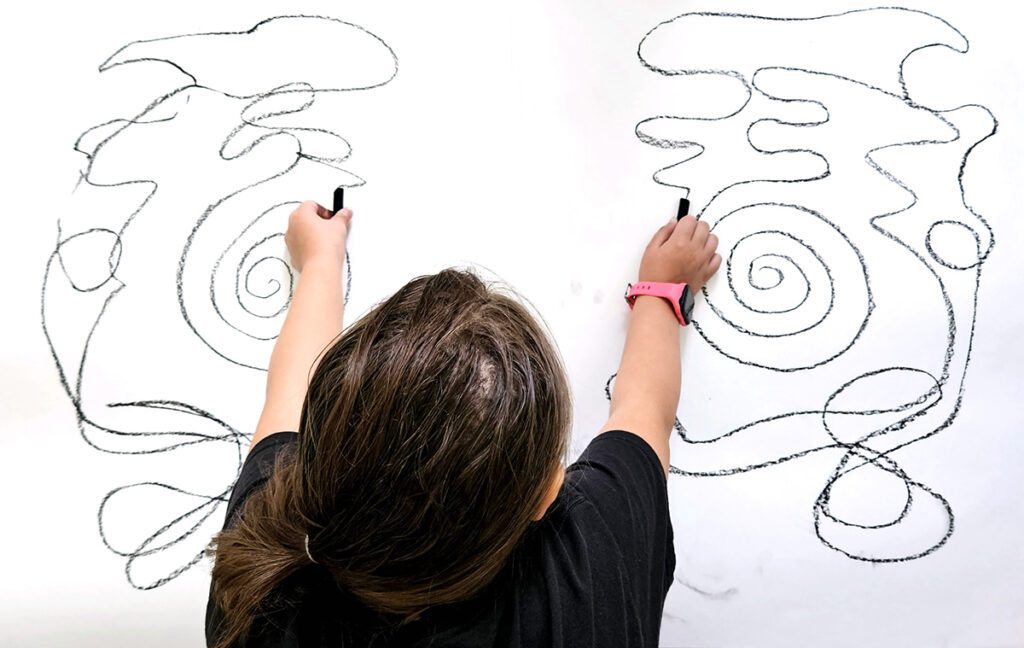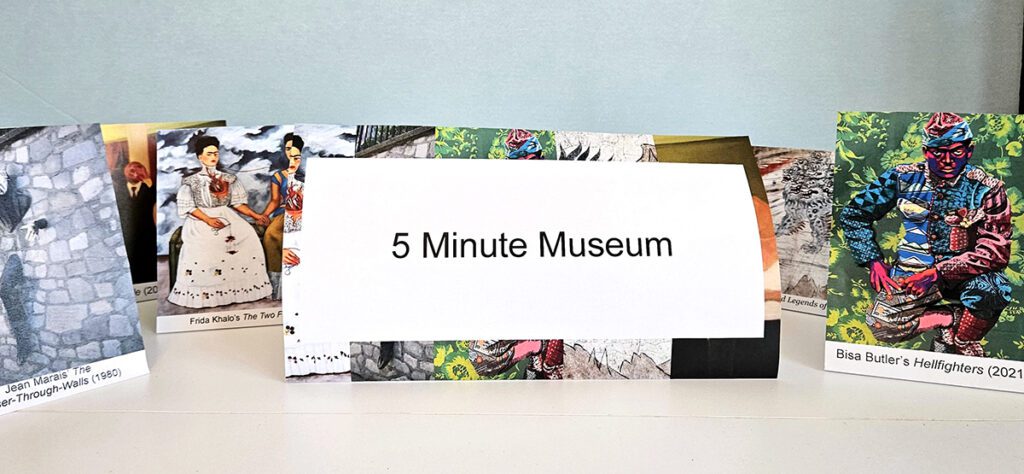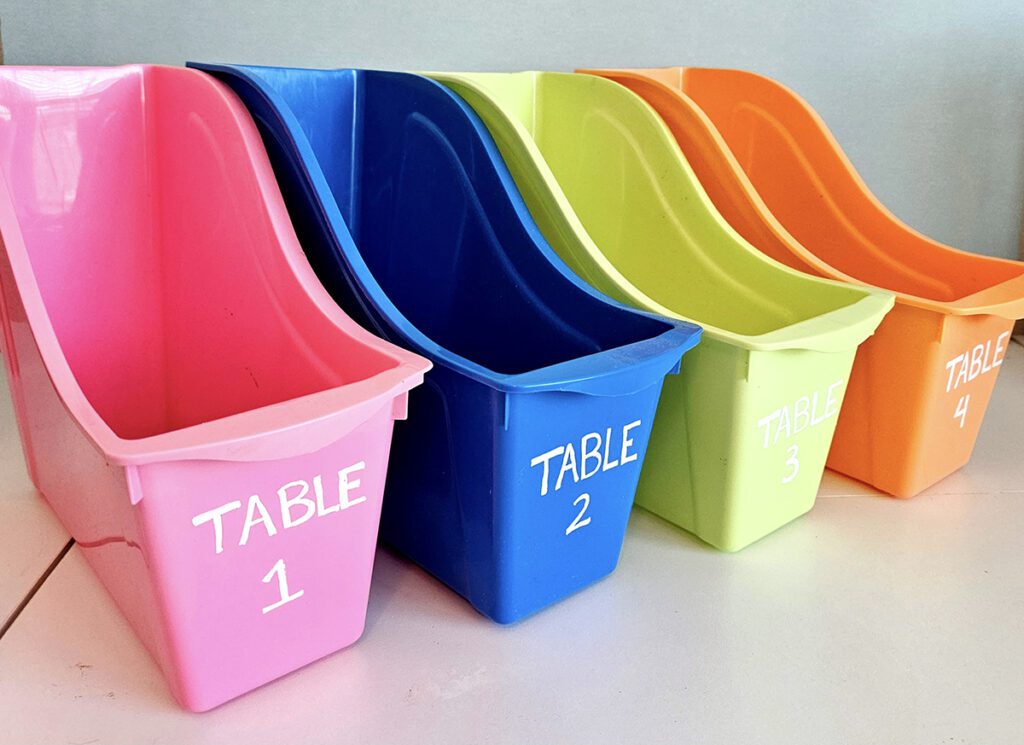Have you ever spent hours teaching students a concept, only for them to act like they never learned it the next day? It’s easy to get frustrated and blame the students for not paying attention. However, it may not be a cut-and-dry “who’s to blame” situation. Part of the challenge may be that students’ brains are not processing information in an optimal way so they are unable to retain it long-term. While your lessons are engaging and your instruction is clear, there are strategies you can easily integrate to ensure how you present content aligns with how brains work. Intentionally teaching this way is brain-based learning.
Keep reading to discover how we can teach using brain-based learning to make art connections that last.

While each student is unique, there are principles to keep in mind that are helpful when designing learning for all students across the board.
Here are four overarching principles to consider:
- Emphasize meaning.
Students are likely to care about their learning when they can relate the content to their own lives and apply the information to the real world. - Maintain a safe learning environment.
When students’ physical, psychological, and emotional needs are met, they are able to focus on learning new things. - Create student-centered learning environments.
Loosen control and allow students to have choice in what they’re learning. Try some of the techniques in the Choice-Based Art Education course for ways to make the transition. - Be flexible in your teaching approaches.
It’s easy to default to teaching in ways we prefer to learn. Don’t be afraid to mix things up and provide instruction in more than one way or incorporate new methodologies. The more ways you can teach something, the more students you will reach.
These principles may sound great but you’re wondering how to implement them with your students. Sara Hileman breaks down educational approaches to brain-based learning with a helpful acronym, “BRAIN BASED,” which is deciphered below. For more information, check out Engaging Students with Brain-Based Learning.
Here’s the acronym:
Brain’s Time Clock: Keep rhythm by alternating between spatial and verbal tasks.
Repetition: Use previewing and reviewing strategies.
Active Learning: Increase blood flow with physical movement.
Images: Enrich the visual learning environment.
Novelty: Stimulate the brain with new approaches.
Be Colorful: Facilitate retention and motivation by color-coding.
Automatic Learning: Recognize the influence of nonverbal communication.
Social Brain: Exploit opportunities for cooperative learning.
Elicit Emotions: Create opportunities for emotional engagement.
Develop Thinking Skills: Engage learners in problem-solving.
Let’s break down the acronym and take a look at how to apply each of the 10 strategies in the art room.
1. Brain’s Time Clock
Students’ brains naturally fluctuate between preferring verbal tasks and spatial tasks. To mitigate this, break your class period up so students are communicating with each other about art and working on their art. Communicating about art can be about their own work, the work of a peer, a famous artwork, or a known technique.
Here are two ways to break up your class into short verbal and spatial activities:
- Take a gallery walk.
Halfway through the class period or when students are antsy, have students stand up and walk around the room to look at everyone’s artwork. Ask students to give verbal feedback to each other. - Do pop critiques.
Display an artwork and ask students to analyze it. Discuss the artwork in groups and then share their findings with the class.
2. Repetition
Repetition is important for transitioning information from short-term to long-term memory—but it can be boring!
Make repetition more interesting by using these two techniques:
- Create catchphrases for important concepts.
Turn important concepts into short, easy-to-remember phrases. This makes them simple to repeat and will stick in students’ minds. Saying, “Lighter lights, darker darks” is catchier than saying, “You need more contrast.” You’ll know it’s working when you hear students repeating the catchphrases without prompting! - Display a “coming soon” poster.
Giving students a glimpse of what’s coming next allows them to mentally prepare. It also prevents them from asking you a 100 times what their next project will be.
3. Active Learning
Many art forms require students to be sedentary. Although it will take conscious effort to incorporate movement, the payoff when it comes to learning and classroom management is well worth it. Kinesthetic art reinforces learning and is fun!
Here are three activities to try:
- Play Simon Says.
Compile a slideshow of famous sculptures. Tell students, “Simon Says act like Jeff Koons’ Balloon Dog!” Students pose as the sculpture. It’s a fun way to expose students to art history and introduce the design thinking required to ensure a sculpture has the balance to stand on its own. - Make students model for speed gesture drawings.
Divide students into pairs. One student models different poses while the other student draws. Every 30 seconds, the model will change position. After five minutes, the two students will swap roles. - Create large-scale art.
The bigger the art, the more students have to move to reach the different parts of the canvas. Just because it’s a large project doesn’t mean it has to be a long-term project. Students lie down on a piece of bulletin board paper with charcoal in each hand. Students make the same movements with both hands at the same time, stretching their arms and dragging the charcoal across the paper.

4. Images
By nature, most of us are visual learners so we usually have visuals down pat! It’s still helpful to take a peek at specific ways to showcase visuals in the classroom for optimal learning.
Here are two specific ways to include images to stimulate students’ brain-based learning:
- Include visual information on the walls.
Including anchor charts, word walls, and visually appealing pictures allows students to passively digest information when their minds wander from the task at hand. - Present information in different visual formats.
In each presentation, use a variety of visuals like videos, charts, graphic organizers, images, and written information. This gives students many opportunities to process the content.
5. Novelty
Getting out of your default lesson format stimulates your students’ brains and gets their attention. It also stretches you as a teacher and keeps your instructional prowess fresh!
Mix up your traditional techniques by trying these three approaches:
- Participate in a 5-Minute Museum.
Students dress up as a famous artist or match a series of artworks to the correct art history time period. You can even host an Artist Roast where you divide students into groups and have them roast the other group’s chosen artist or famous artwork. These activities are fun alternatives to traditional art history presentations and encourage students to examine artworks without them even realizing it! Take AOEU’s Educating Through Art History course for more novel approaches to art history. - Use centers.
Instead of having the whole class try the same technique at once, create centers focused on one material or technique at a time. This allows students to focus and build proficiency without distractions. - Play vocabulary games.
When it comes to vocabulary, it’s natural to use a worksheet as a “go-to” activity. Instead, break out a game! Students still learn and practice vocabulary but in a way that will create fond memories of your class.

6. Be Colorful
As art teachers, many of us are already prone to color-coding everything. Luckily, this is a key aspect of brain-based learning! Color coding allows students to associate words, places, and objects with a particular color. So go ahead and color code to your heart’s content! For students who are color blind, include symbols so they can still make associations without color.

7. Automatic Learning
Automatic learning is all about how students learn without verbal communication. Non-verbal factors should promote learning instead of hinder it. For example, if you model positivity and excitement about the next assignment, students will be more likely to replicate your attitude. However, if you act like the next project is going to be a drag, your students will associate boredom and irritation with upcoming learning.
8. Social Brain
Art class is naturally more social because it offers many opportunities for collaboration. Plus, we often have table setups that encourage both group work and conversation during individual studio time. Activate students’ social brains by doing collaborative projects, art-related games, artwork discussions, or brainstorming sessions.
9. Elicit Emotions
Students’ brains are more likely to retain information when it sparks an emotional response. They are able to tie new learning to a familiar feeling they have already experienced.
Here are three ways to elicit emotions in the art room:
- Speak passionately and share an emotional connection to the artwork, artist, or technique at hand.
- Integrate social-emotional learning.
- Create artwork expressing emotions.

10. Developing Thinking Skills
It’s easy to fall into a routine of demonstrating techniques before letting students work. However, students learn best when they figure something out for themselves. Provide the material and tools with safety instructions and let students loose to explore and problem-solve. Consider giving students a project-based learning assignment or open-ended prompt.
Lastly, as you consider incorporating brain-based learning into your classroom, take your students’ age into consideration. Brains are developmentally different at each age and it’s important to consider which brain-based learning techniques would work best for your students. While brain-based learning stretches your students to receive and retain more information, it’s most effective when adhering to developmentally appropriate activities. Check out this website for more insight into the best brain-based practices for each age group.
Brain-based learning is a fancy way of saying you teach in ways that allow students’ brains to optimally process information. Ensuring students are safe, making real-life applications, letting students have a say in their learning, and being flexible are important parts of brain-based learning concepts. For straightforward brain-based strategies in the art room, start by taking the brain’s clock into account, implementing repetition, and injecting active learning, images, and novelty into your curriculum. Be colorful, incorporate automatic learning, allow students to work together, engage students’ emotions, and ask them to problem solve. With a few intentional tweaks to your instructional methods, you’ll be pleased with students’ increased participation and retention!
How do you already use brain-based learning in the art room?
Which brain-based strategy will you implement this year?
Magazine articles and podcasts are opinions of professional education contributors and do not necessarily represent the position of the Art of Education University (AOEU) or its academic offerings. Contributors use terms in the way they are most often talked about in the scope of their educational experiences.





